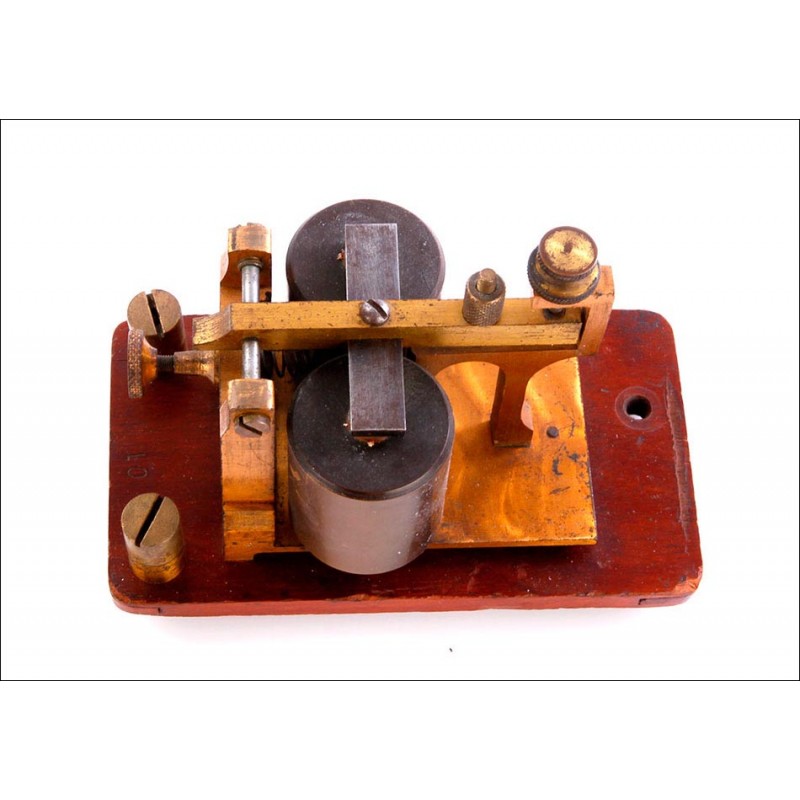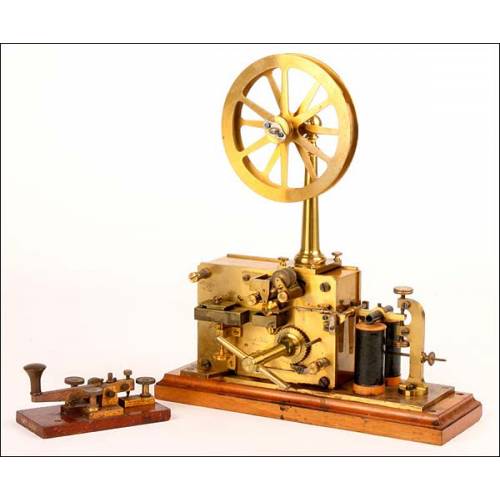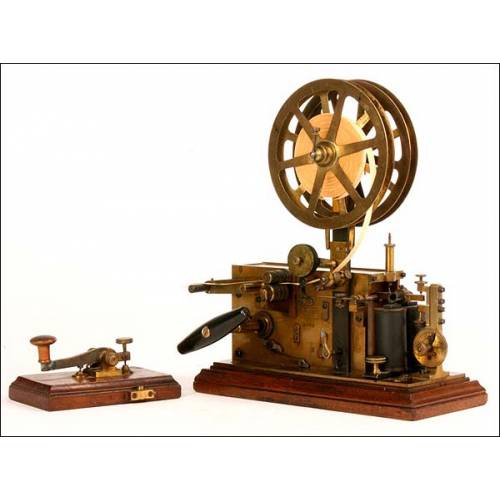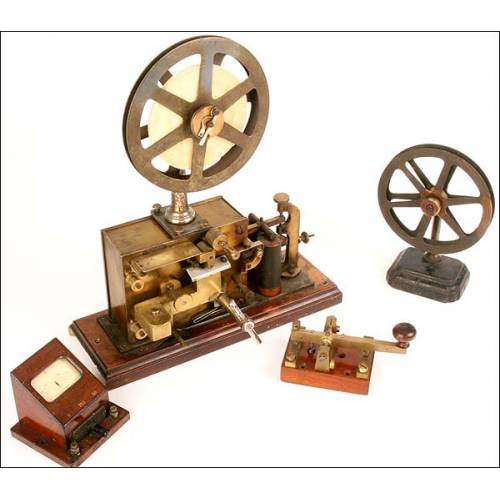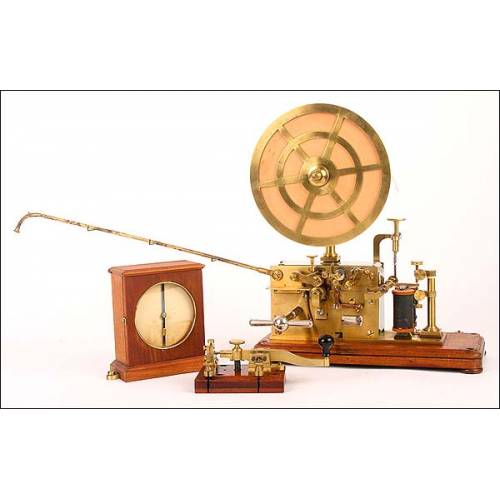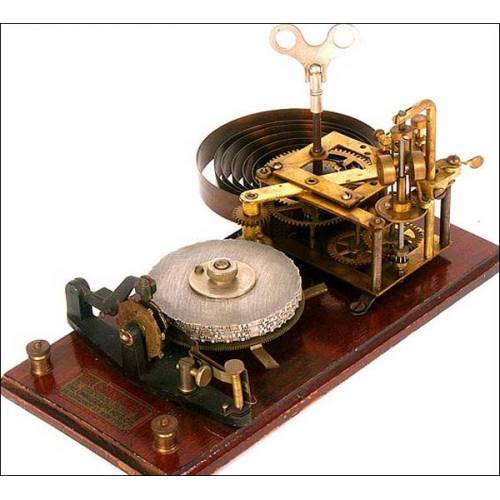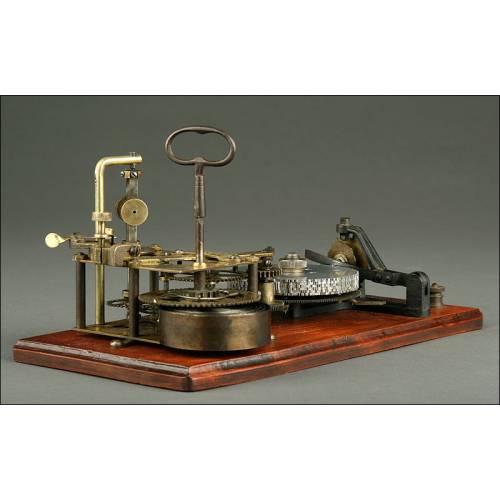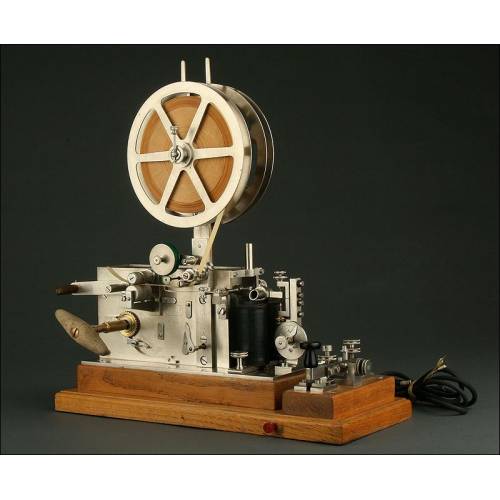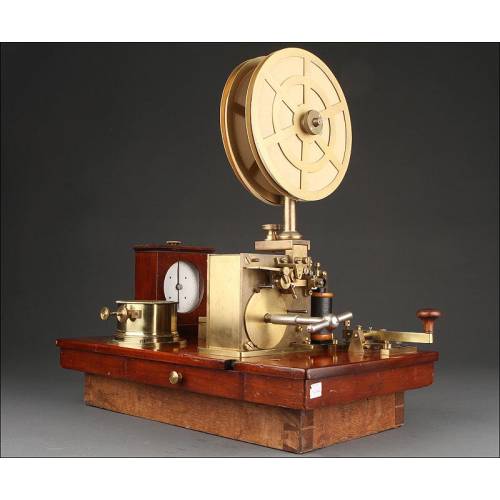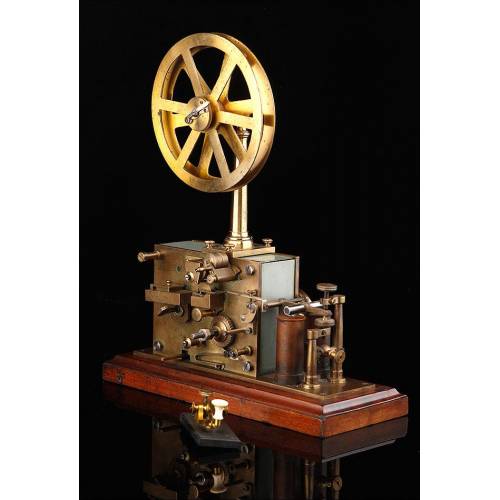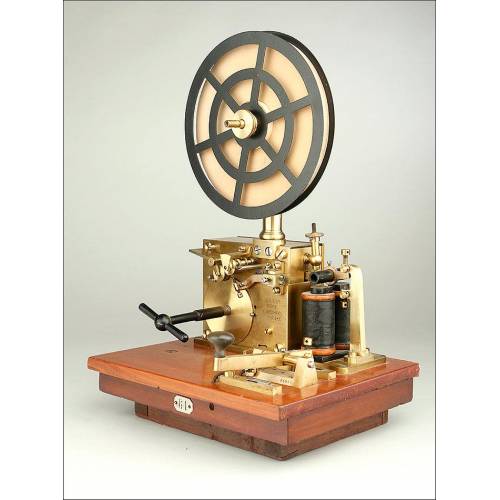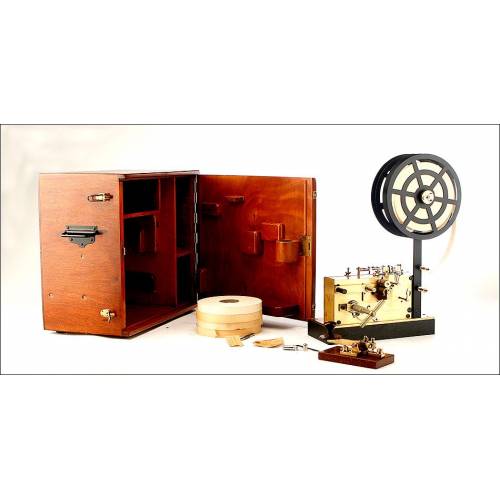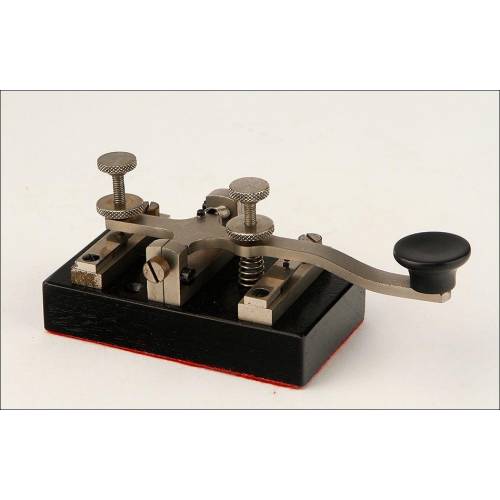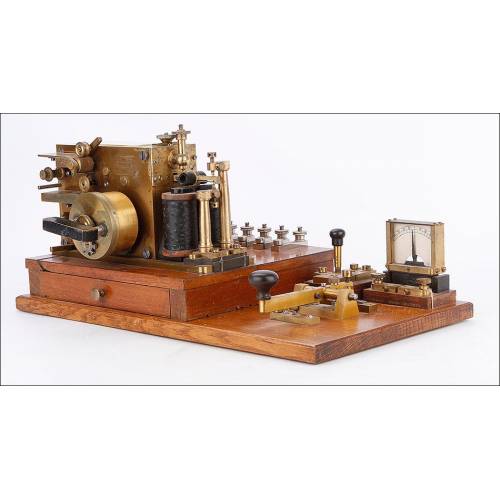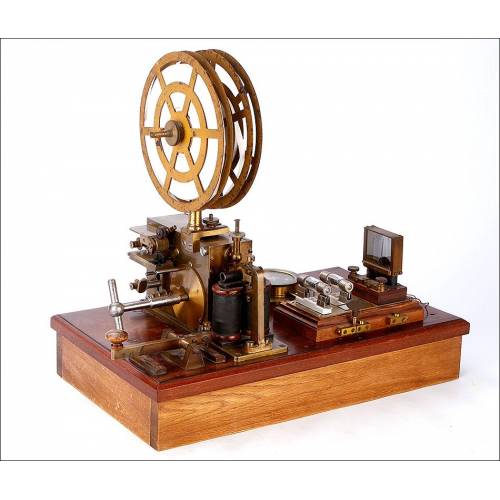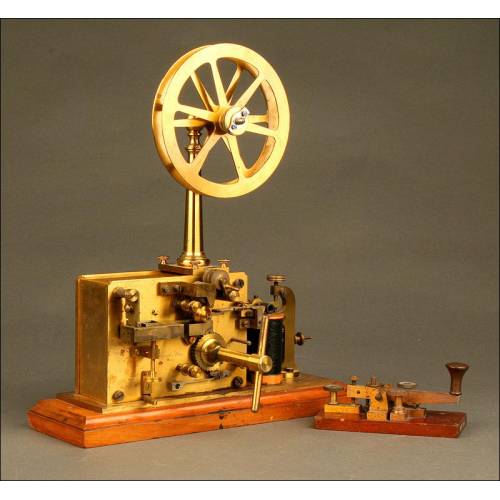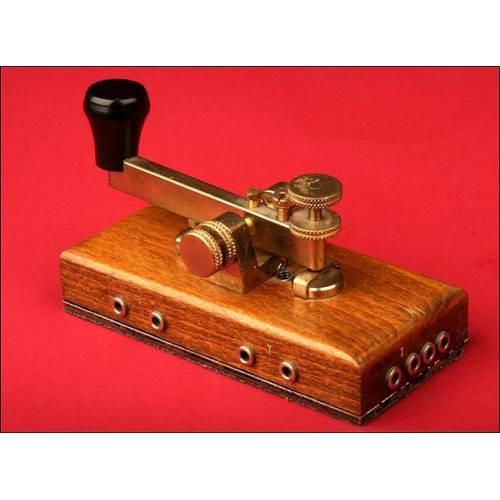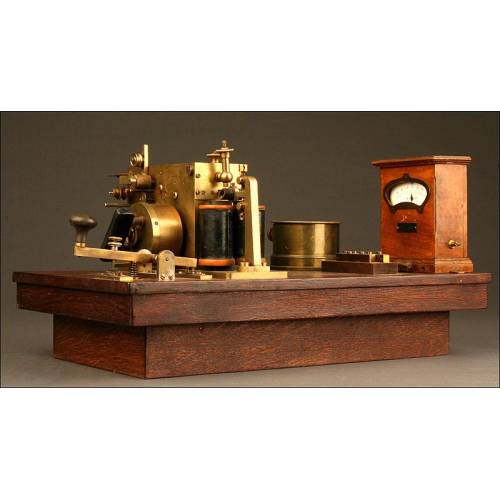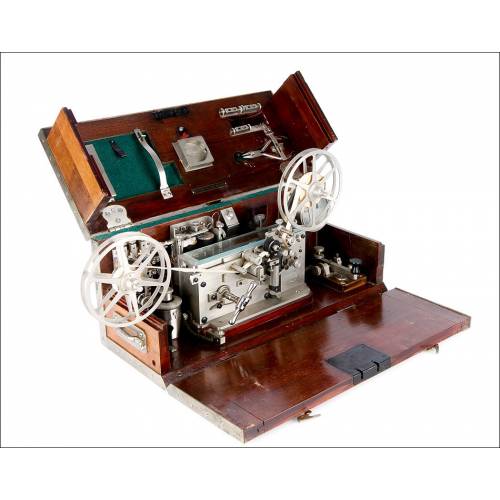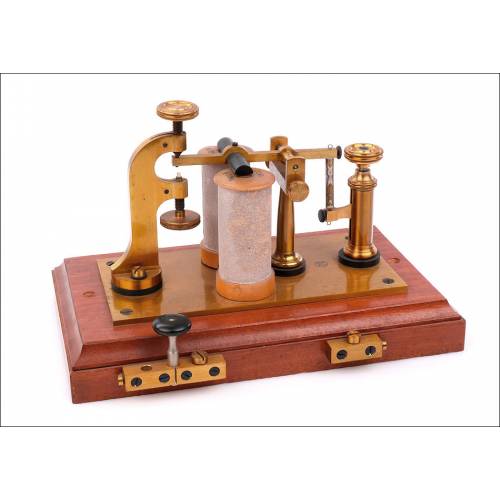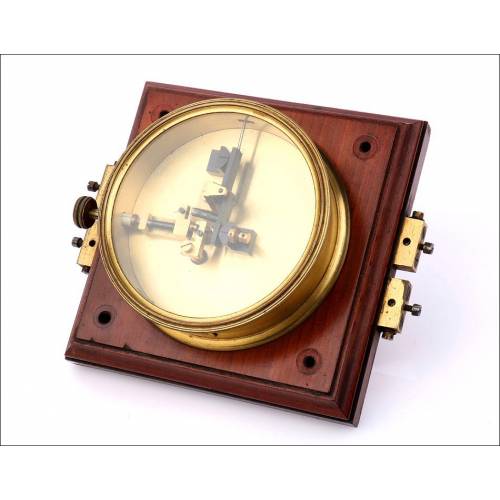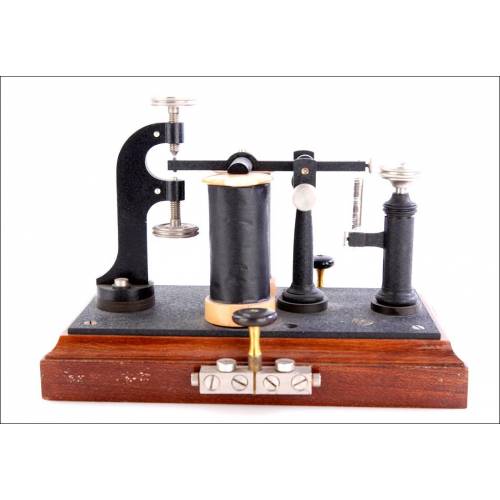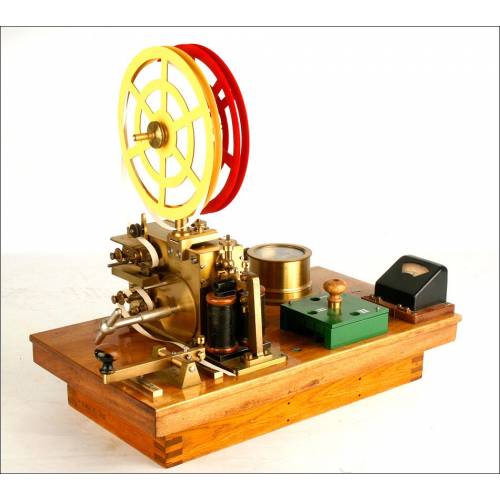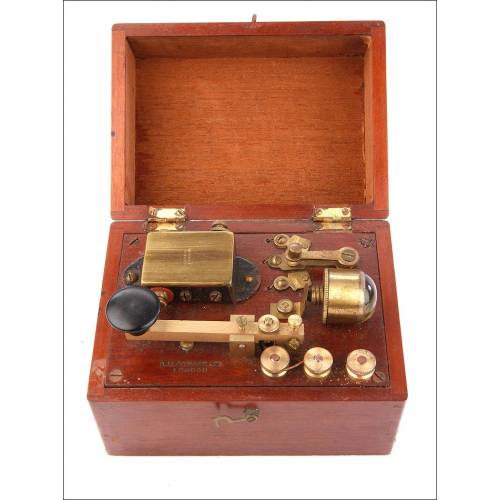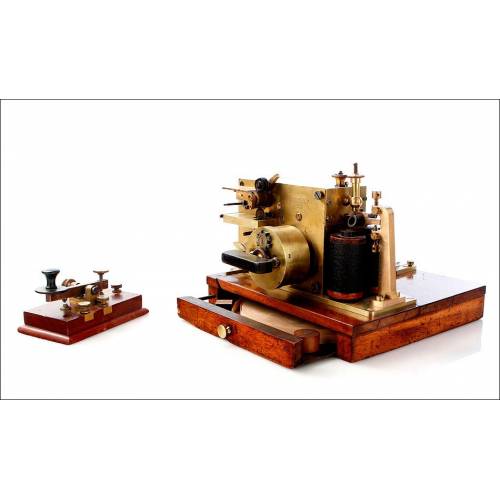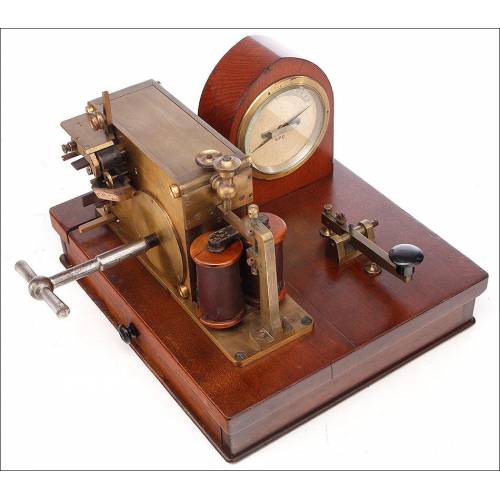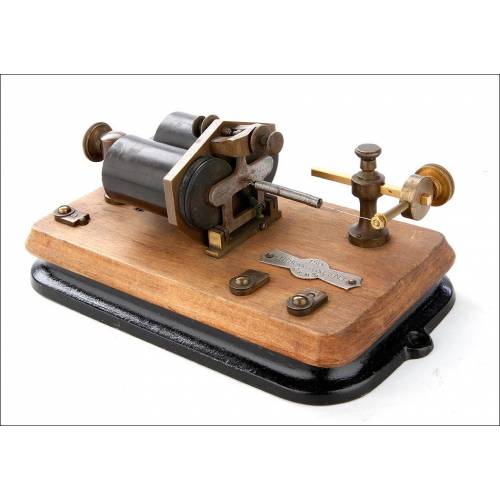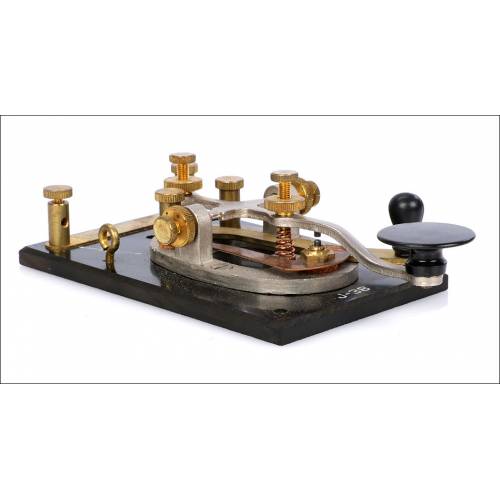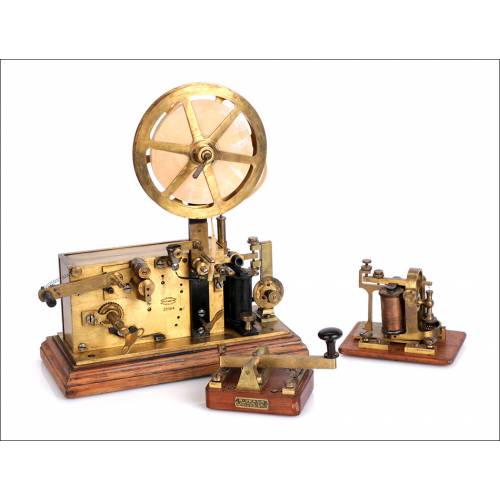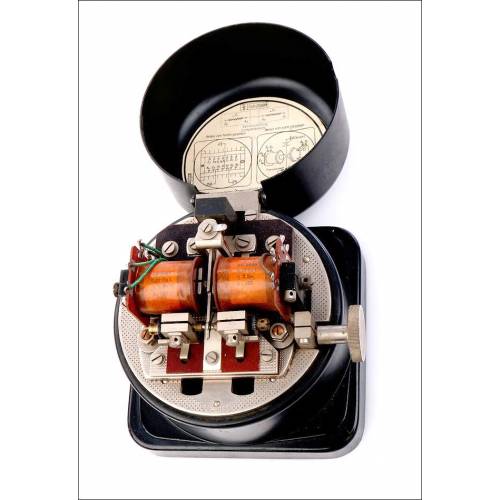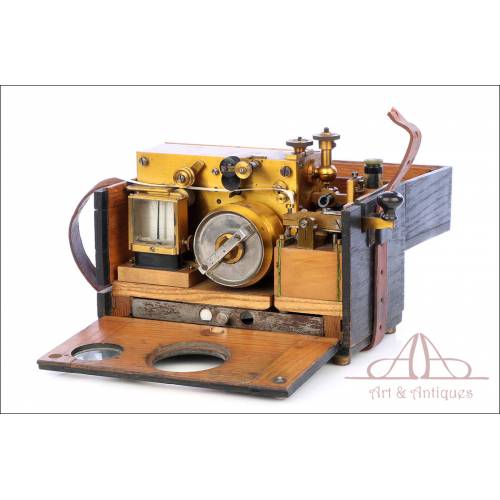B-978
Foote, Pierson & Co. Antique Telegraph Relay, Circa 1880.
Antique sound relay manufactured by Foote, Pierson & Co. Complete and original vintage.
Sold!
This fine device is a telegraphic relay made by Foote, Pierson & Company in New York in the late 19th century. The relay is complete: all its component parts are original from the time. It is in really good condition, being such an interesting item for any collector of industrial antiques. This relay is made of wood, golden brass and metal; all the materials are well preserved and only show some slight signs of wear, due to the trace of time and the use. The relay that we can see in the images sits on a solid mahogany wooden base with reinforcement pieces of wood inserted at each end. The base is in good condition, still protected by a lovely satin finish. On the base stands the relay itself, made up by several golden-brass pieces connected by adjustable screws. It also mounts two symmetrical rods for the copper coils. The brass base bears an engraved inscription with the manufacturing companys name and location, and the wooden base bears a paper sticker with information about the device, such as the manufacturing year and the relays electrical resistance. As authentic as historical, this antique telegraphic relay will stand out in a showcase containing the best turn-of-the-century industrial antiques. Medidas: Ancho: 13,5 cm. Fondo: 7,5 cm. Measurements: Width: 5.3 in / 13.5 cm. Depth: 2.9 in / 7.5 cm.History of Relays Foote, Pierson & Company History Relays are electromagnetic devices used to amplify electrical signals in a telegraphic line: with the help of a battery, relays generated stronger sound signals from the weaker signals received from the telegraph line. The relay was invented by Joseph Henry in 1835. Foote, Pierson & Company was one of the pioneer firms in the field of telegraphy. They manufactured and imported railway and telegraphic supplies. It was founded in New York in 1867 and was active until 1950. Actually, Foote, Pierson & Co. was the successor of E. S. Greeley & Co., founded in 1865.

